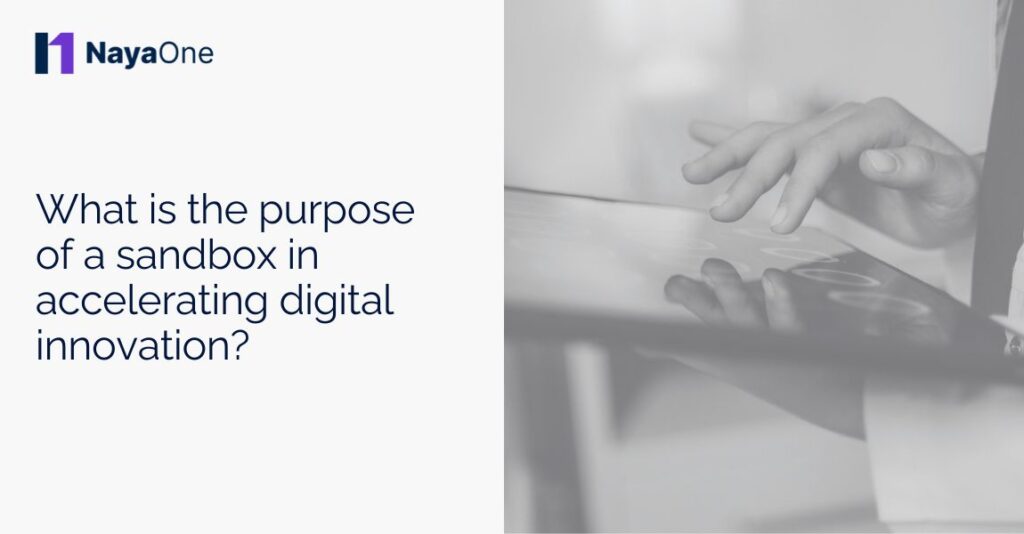Picture this: a team of developers has a brilliant idea for a new digital service. They want to test it out, but there’s a problem. Rolling it out on live systems could risk customer data, break existing processes, and cause chaos if something goes wrong. That’s where a sandbox comes in. Think of it as a safe playground for digital experiments, a place where bold ideas can be tested without breaking anything in the real world.
And here’s a nifty nugget: nearly 40% of firms that completed the UK Financial Conduct Authority’s sandbox programme went on to secure investment during or after their trials. That shows just how powerful sandboxes can be in not only testing ideas but also turning them into viable businesses.
If you’re wondering what is the purpose of a sandbox is, it’s not just about making life easier for developers. It’s about giving organisations the freedom to innovate without fear. Sandboxes have become a core part of digital transformation, especially in industries like finance and technology, where the stakes are high and regulations are strict. But how exactly do they help speed up innovation? Let’s explore.
What is the purpose of a sandbox in digital innovation?
At its heart, a sandbox is a controlled environment where new software, systems, or services can be tested. Imagine a laboratory for digital ideas. Instead of experimenting with live customer data or operational platforms, companies can replicate those conditions inside the sandbox and test safely.
This means that whether you are building a new payment solution, testing an app integration, or creating a digital identity tool, you can see how it works in practice without risking downtime or data leaks. The real magic of a sandbox lies in its ability to mirror real-world systems closely enough that the testing feels authentic, while still keeping everything separated from production.
So when someone asks, “What is the purpose of a sandbox?” the answer is simple: it creates a safe space to innovate faster, smarter, and with less risk. It takes the pressure off teams by letting them try, fail, and try again until they get it right.
How do sandboxes reduce risk for businesses and regulators?
No business leader enjoys the idea of risk spiralling out of control, especially when customers and regulators are watching. Sandboxes step in as the safety net. Because they are isolated, whatever happens inside the sandbox stays inside the sandbox. A bug that crashes the system, a coding flaw, or a poorly designed feature won’t affect real users.
And here’s a cool stat to note: about 90% of firms that completed the first wave of testing in the UK’s FCA sandbox moved on to a wider market launch, proof that testing safely paves the path to broader success.
For financial services, the benefits are even bigger. Regulators often support sandbox initiatives because they allow new solutions to be tested under supervision. Start-ups and established firms alike can experiment with compliance requirements before products go live. This not only reduces the risk of fines or regulatory headaches but also builds trust between innovators and authorities.
In other words, if you’re asking what is the purpose of a sandbox, one clear answer is that it balances creativity with caution. Businesses get the freedom to push boundaries, while regulators get the reassurance that rules are being respected. It’s a win-win.
Why are sandboxes essential for collaboration and co-creation?
Innovation doesn’t happen in isolation. Some of the most exciting digital products are born when different organisations come together to test, tweak, and build on each other’s ideas. Sandboxes make this kind of collaboration much easier.
Think about it: a fintech start-up might have a clever new tool, but they need to see how it integrates with a bank’s systems. Or a regulator might want to understand how new technologies affect compliance frameworks. A sandbox provides neutral ground where all of these parties can experiment side by side.
Instead of endless meetings and theoretical discussions, a sandbox offers proof. You can see what works, what doesn’t, and how different pieces of technology fit together in real time. This speeds up the innovation cycle and helps create solutions that are not only technically sound but also practical in the market.
By encouraging co-creation, sandboxes bring diverse players into the same conversation. And the result? Products that meet user needs more effectively and reach the market quicker.
In what ways do sandboxes accelerate market readiness?
One of the biggest challenges for digital innovation is the time it takes to move from an idea to a live product. Sandboxes cut that timeline significantly. Because testing environments mimic real-world conditions, teams can identify weaknesses early and refine their solutions before launch.
And here’s a compelling stat: over 90% of firms from the first cohort in the UK’s Financial Conduct Authority sandbox successfully launched their products to market, which speaks volumes about how sandboxes turbo-charge go-live readiness.
This means fewer nasty surprises when a product goes live. Feedback from sandbox testing also helps teams improve user experience and technical performance, ensuring the final product feels polished and ready. Regulators who are involved in sandbox trials can give early feedback too, helping innovators understand compliance gaps long before approval is needed.
Another benefit is scalability. A solution that performs well in a sandbox is more likely to succeed when rolled out at scale. This confidence gives businesses the green light to move faster, knowing they’ve already ironed out the major issues.
In short, sandboxes turn ideas into market-ready products with fewer delays and far less stress.
How do sandboxes shape the future of digital innovation?
Sandboxes are more than just testing grounds. They are enablers of creativity, collaboration, and trust. They reduce risk, speed up development, and create space for regulators and innovators to work together.
When you step back and ask again, what is the purpose of a sandbox? The bigger picture comes into focus. They don’t just help individual projects succeed; they help entire industries move forward with confidence. By giving teams a safe space to try new things, sandboxes unlock opportunities that might otherwise have been too risky to pursue.
As digital ecosystems grow more complex, the role of the digital sandbox will only become more important. They provide the perfect balance of safety and freedom, turning ambitious ideas into real-world solutions that benefit everyone. And that is exactly why they are shaping the future of digital innovation.





